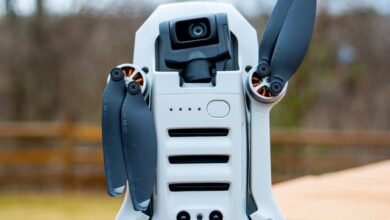Miniature sensors that float in the air have been developed


Miniature sensors that float in the air have been developed
Miniature sensors that fly freely in the wind, and equipped with a wireless interface, can measure temperature, humidity or other environmental data, and record such parameters over large areas, such as forests or fields. These devices can be used in many fields, in which agriculture and meteorology seem to be the most important.
Wireless sensors can
Scientists from the University of Washington encountered this problem inspired by nature – plants that use the wind to disperse seeds. The results of their research were published on the pages of the prestigious science website Nature in mid-March.
Check also:
They have developed a small device with sensors that float for some time by the force of the wind in the air before it finally hits the ground. The sensor weighs only 30 milligrams, and in moderate winds it can travel up to 100 meters from the place where the drone was dropped.
The sensor can contain up to four sensors and, after landing on the ground, draws power from miniature solar panels placed on it. They supply power to all electronic devices on board, which can transmit data via radio at a distance of up to 60 meters.
The first problem that the scientists had to solve was that the device could float freely above the ground for as long as possible. It turns out that the shape of the device is decisive. Scientists tested several dozen structures to determine what to do to make the sensor hover as long as possible, and thus fly the greatest distance.
So they looked at the seeds of a single plant that is second to none in this regard. It is a well-known herb called dandelion, specifically the seeds of this plant. Miniature bristles stand out from them, thanks to which they float in the air for a long time. So they equipped the sensors with similar elements in the form of a solid ring structure. To measure how far the devices would travel in the wind, scientists dropped them from different heights by doing so manually (high-rise buildings) or using a drone.
To ensure lightness, electronic devices are powered not by a heavy battery, but by solar panels. Sensors always land on the ground in such a way that the solar panels are vertical. Using the panels means that after sunset, the sensor does not turn on and cannot transmit data. But when the sun rises the next morning, the sensor is alive and can transmit data again. At the same time, the team designed the electronics to contain a special capacitor that could store some electricity overnight.
Watch also



